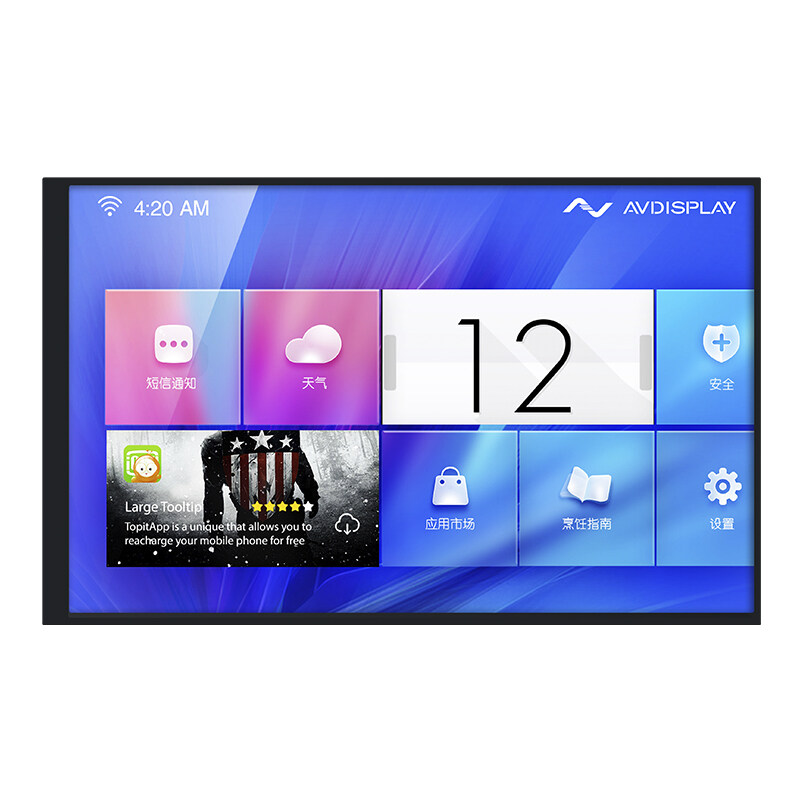Have you ever wondered how the screens on our smartphones and tablets have become so responsive and vibrant? If so, you're not alone. The technology behind these screens, particularly IPS (In-Plane Switching) display capacitive touch screens, has revolutionized the way we interact with our devices. In this article, we'll delve into the intricacies of this technology, its evolution, and its impact on various aspects of our lives.
Introduction: The Touch of Innovation
The question isn't whether you've used a device with an IPS display capacitive touch screen; it's how many times today you've swiped, tapped, or pinched to navigate through your digital world. These screens have become an integral part of our daily interactions, and their story is one of continuous improvement and user-centric design.
Understanding IPS Display Technology
Before we can appreciate the capacitive touch aspect, it's crucial to understand what makes IPS displays special. IPS technology was developed to improve the viewing angles and color reproduction of LCD screens. Unlike traditional TN (Twisted Nematic) panels, IPS panels allow for a wider viewing angle without color shift or loss of image quality.
Key Features of IPS Displays:
- Wide Viewing Angles: IPS screens maintain color accuracy and brightness even when viewed from extreme angles.
- Better Color Reproduction: They offer a more consistent color gamut, making them ideal for photo and video editing.
- Improved Power Efficiency: With advancements, IPS panels have become more power-efficient, extending battery life in mobile devices.
The Capacitive Touch Revolution
The introduction of capacitive touch screens was a game-changer. Unlike resistive touch screens that require pressure to register a touch, capacitive screens detect the electrical properties of the human body.
How Capacitive Touch Screens Work:
- Conductive Layers: These screens have a layer of capacitive material that can store an electrical charge.
- Touch Detection: When a finger comes into contact with the screen, it alters the local electrostatic field, which is detected by the sensors.
- Precision and Sensitivity: Capacitive screens offer high sensitivity and can detect multiple touches simultaneously (multi-touch).
Evolution of IPS Capacitive Touch Screens
The journey from the early days of bulky, slow-to-respond screens to today's sleek, high-definition, and responsive displays is a testament to technological progress.
Milestones in Evolution:
- Early IPS Screens: Initially, IPS technology was limited by slower refresh rates and higher costs.
- Integration with Capacitive Touch: The combination of IPS with capacitive touch screens led to a significant leap in user experience.
- High Definition and Beyond: With resolutions increasing from HD to FHD, and now to 4K and beyond, the clarity and detail of images have improved dramatically.
- Curved and Flexible Displays: Modern IPS displays can be curved or even flexible, opening up new design possibilities.
Impact on Society and Industry
The widespread adoption of IPS display capacitive touch screens has had profound implications for various sectors.
Consumer Electronics:
- Mobile Phones: The responsiveness and color accuracy have made smartphones more appealing for gaming and media consumption.
- Tablets: Tablets with IPS displays have become essential tools for education and entertainment.
Professional Use:
- Graphic Design: Professionals rely on the color accuracy of IPS screens for design and editing work.
- Medical Imaging: In the medical field, the high resolution and color reproduction are crucial for accurate diagnostics.
Manufacturing and Supply Chain:
- Demand for Quality: The demand for high-quality screens has driven innovation in manufacturing processes.
- Global Supply Chains: The production of these screens involves a complex global supply chain, impacting economies worldwide.
Challenges and Future Prospects
While IPS display capacitive touch screens have come a long way, there are still challenges to overcome.
Current Challenges:
- Cost: High-quality IPS displays can be expensive, making them less accessible to some consumers.
- Burn-In: Prolonged static images can cause burn-in on some panels, although this issue is becoming less common.
Future Developments:
- OLED Competition: OLED technology offers its own set of advantages, and the competition between the two technologies will drive further innovation.
- Foldable and Rollable Screens: The flexibility of IPS technology will play a crucial role in the development of foldable and rollable devices.
- Energy Efficiency: Continued research into power-saving technologies will make these screens even more efficient.
Conclusion: A Touch of the Future
IPS display capacitive touch screens have transformed the way we interact with technology. As we look to the future, the potential for further advancements is exciting. Whether it's through improved display quality, energy efficiency, or novel form factors, the journey of the IPS display is far from over. It's a story of human innovation at its best, where the touch of a finger can unlock a world of possibilities.

